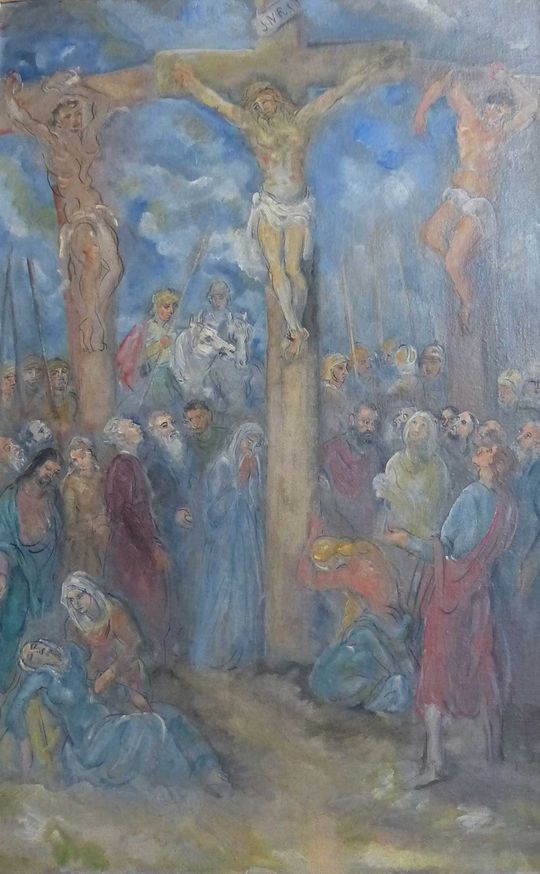CRUCIFIXION
20th century (first half)

Oil on canvas mounted on wood
2006-5-1
Bequeathed by M. Pol Friant in 2006
H. 89 cm - L. 65 cm
Giovanni Leonardi, born in Sicilia, discovers France in 1900 while working with other compatriots in the construction of the Italian pavilion of the World Fair. He then settles in Montmartre where he meets the artistic bohemia of the Belle Epoque and notably Max Jacob.
As a ceramist, Leonardi works in several faience centers such as Desvres, Aubagne and Vallauris before attending the HB earthenware factories in Quimper, following the advice of Max Jacob who invites him to Quimper in 1925.
The gouache acquired in 2006, if it does not reach the level of inventiveness of the ceramics of the same artist, testifies in the first place strong friendships that have marked all his career. It is a gift from Pol Friant, his executor and dear friend, who, along with Jean Moulin, contributed to his artistic recognition.
In this Crucifixion we find the religious theme that the very believer Leonardi has developed several times in his ceramics, as well as this work on the curve and movement.
CRUCIFIXION
20th century (first half)

Oil on canvas mounted on wood
2006-5-1
Bequeathed by M. Pol Friant in 2006
H. 89 cm - L. 65 cm
Giovanni Leonardi, born in Sicilia, discovers France in 1900 while working with other compatriots in the construction of the Italian pavilion of the World Fair. He then settles in Montmartre where he meets the artistic bohemia of the Belle Epoque and notably Max Jacob.
As a ceramist, Leonardi works in several faience centers such as Desvres, Aubagne and Vallauris before attending the HB earthenware factories in Quimper, following the advice of Max Jacob who invites him to Quimper in 1925.
The gouache acquired in 2006, if it does not reach the level of inventiveness of the ceramics of the same artist, testifies in the first place strong friendships that have marked all his career. It is a gift from Pol Friant, his executor and dear friend, who, along with Jean Moulin, contributed to his artistic recognition.
In this Crucifixion we find the religious theme that the very believer Leonardi has developed several times in his ceramics, as well as this work on the curve and movement.
